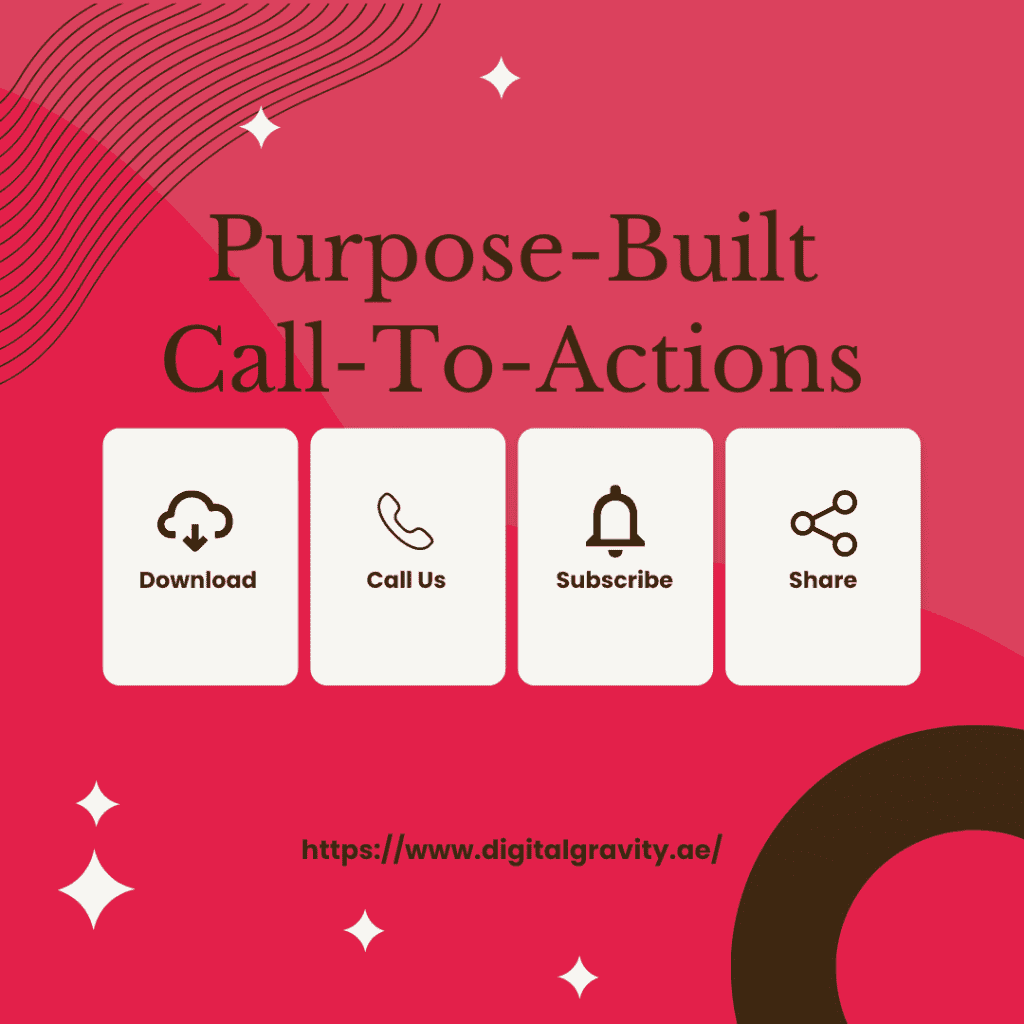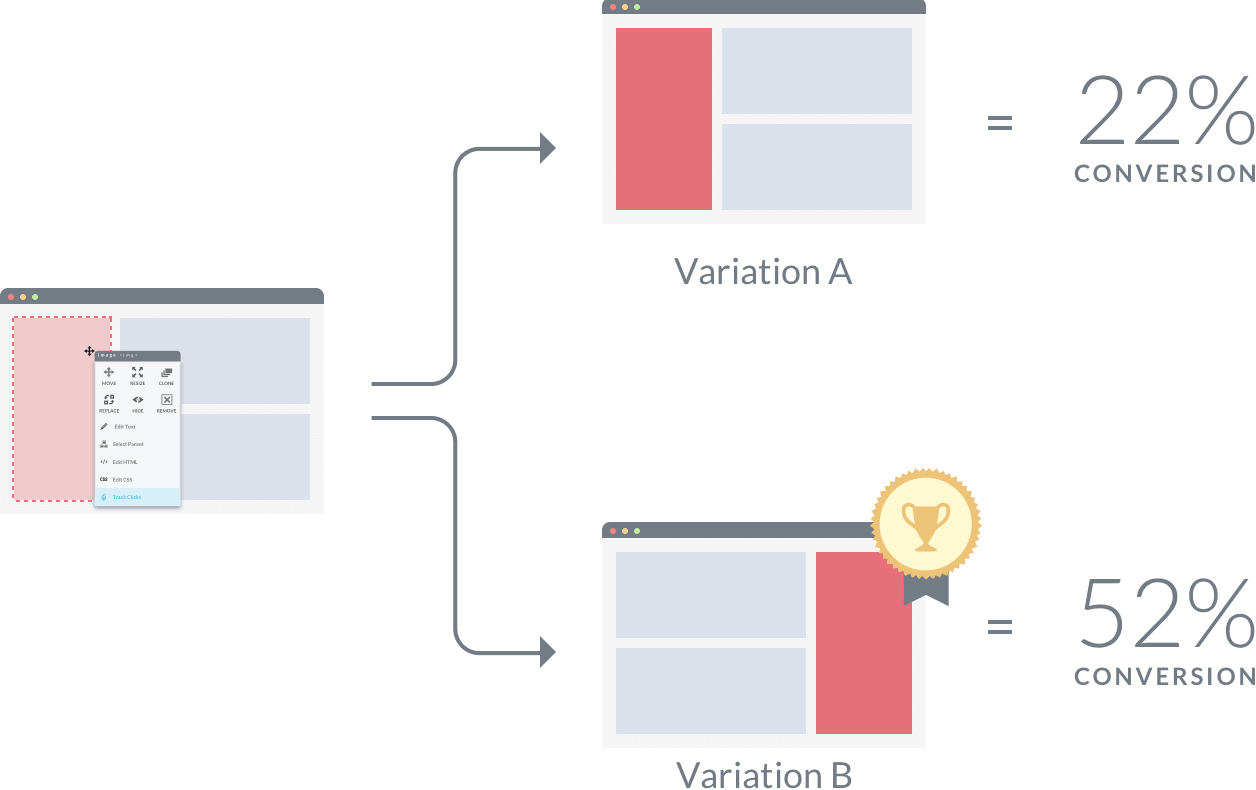Conversion Rate Optimization: 10 Tips to Boost Online Conversions and Generate Qualified Leads
Are you struggling to boost your website’s conversion rate, but don’t know where to start? Don’t worry in this blog we will discuss some game-changing conversion rate optimization tips to boost your website’s online conversions and generate more qualified leads.
Before we share with you our list of powerful conversion rate optimization tips, let’s shed some light on a few basic concepts.
What is a CRO?
Conversion Rate Optimization (CRO) is a strategic approach used for boosting the percentage of website visitors who perform a desired action such as; signing up for a service, purchasing a product online, or simply clicking on a link. The ultimate focus of CRO strategy is to turn prospects into clients and attained higher sales leads.
How to Calculate CRO?
Before we share with you the e-commerce conversion rate optimization tips for your online store, here’s a video showcasing how to calculate your website’s conversion rate.
Conversion Rate Optimization (CRO) Tips to Boost Online Conversions
1- Headlines Can Hook or Turn A Reader
Peter Koechley at Upworthy has noticed that their content’s traffic sometimes varies by 20%, 50%, and even 500% just because they changed the heading.
Yes, headlines can make a lot of difference to your content’s readability. People examine your content by the heading to decide whether it’s worth their time.
As our attention span today is lower than that of a goldfish, it has become increasingly hard to stop people from scrolling. You might have the best content, exactly what a ripe lead needs but without a killer headline, you risk losing them to your competitor with an effective headline.
Headlines are of many types, including:
- Direct headlines
- Command Headlines
- Instructional & How-to Headlines
- Command Headlines
- Problem-Solving Headlines
- Question Headlines
Your main header is a way to compress your whole marketing message into one bold sentence. Its job is to increase the users’ curiosity, fix a problem, answer a question or command something.
A properly crafted heading can help you earn more quality leads. The trick is to use the above-mentioned headline styles as per your requirements.
At our CRO agency, we have experienced big changes in conversions with small tweaks to the headers. The secret lies in brainstorming with team members from different departments including CRO specialists, content writer’s, designer’s, and developers.
2- A Purpose-Built Call-to-Action Can Maximize Your Conversion Rate
A CTA can be of many types, such as buttons, pricing tables, popups, etc. Your CTA simply tells your audience what they should do on a specific page.
You can’t expect visitors to understand your underlying motive to create a landing page or content. Through CTA, you urge them to take action.
Can a CTA increase or decrease your conversions? Of course, a Call to action is the main determinant of a conversion. A Hubspot research over a six-month duration examined and compared over 330,000 CTAs. The results: personalized CTAs perform 202% better than generic ones.
Google research claims that the most viewable place for a CTA is just above the fold, but a conversion optimization consultant, Michael Aagaard disagrees. His experiments have shown the optimum position to be the bottom of the page. One of his long pages experienced a boost in the conversion rate by 304% with this CTA placement.
- Buttons: Buttons are the most common type of CTAs on landing pages. Marketers should use customized CTA buttons for their website’s conversion optimization. You should experiment with its size, copy, or color combination. The color of your CTA button also matters. The red ones work consistently better than the green ones. But creating a strategic CTA and placing it correctly also defines the number of users you convert. You could boost your CTR by 90% by changing just one word in your CTA button’s text. Unbounce’s previous CTA said “Start your free trial.” They changed it to “Start my free trial” and achieved the results mentioned above.
- Pricing Tables: You can insert your CTA into a pricing table of your subscription plan. These tables market your various services in a table and sell a specific package compared to others.
- PopUp Forms: Many websites throw a popup form in our faces as soon as we land on their page. As much annoying as they are, popup forms do convert very well simply because they work according to the basic principles of crafting effective calls to action. They hook readers, help in social recognition, and subscriber acquisition, and mention upcoming offers and discounts.
For example, a social media strategist, Dan Zarrella found that their page’s signups decreased by more than 50% when they don’t use popups. And the version with a popup form doesn’t significantly impact the bounce rate. In such a scenario, you should use form popups as CTAs but remember it can vary from industry to industry.
3- Perform A/B Testing to Ignite Conversion Rates
Landing pages offer a surefire way to increase your CR optimization and are crucial for any business that wants easy lead generation. A landing page can convert someone who just stumbles upon your page into a lead and a prospect into someone who interacts more meaningfully with your business.
Before we share with you the tips for e-commerce conversion rate optimization for your online store, here’s the formula for calculating your website’s conversion rate.
4- Incorporate Messages into High-Converting Pages
Utilize live chat software to communicate with your visitors in real time and provide assistance as required. To elevate conversions, include these messaging features in your web pages that perform the best, like your product pages. It will help prospects get the details they need immediately.
Businesses can make their chatbots action-based too. Suppose a visitor has been browsing your page for more than a minute. Here, you would want to offer help and respond to any queries they may have. You can do so automatically with a live chat too.
5- Use Retargeting to Re-Engage Visitors
Today customers have a variety of options, and they get confused while shopping online. Most of your visitors don’t convert to your website. Here retargeting comes in. It is necessary for your website’s CRO. By retargeting on social media or other platforms, you can convert those prospects who left your site midway.
In retargeting, a brand track leads to their website and show them online ads as they roam around on the internet. It works wonders when a business retargets visitors of their highest-performing pages. Marketers need well-written content, interactive visuals, and a hooking offer to make it work.
6- Unleash The Power of Your Home & Pricing Page
Homepages can help you turbocharge your website’s conversion rate optimization. The home page welcomes your visitors as they land on your website, facilitates their retention, and further guidance into the site.
You can highlight the URLs that lead to your product information, with a free signup button or include a chatbot that obtains visitor requests at any point during their navigation.
Your pricing page also plays an important role in converting your visitors. For example, you can alter the pricing intervals like price-per-year vs. price-per-month.
Another tactic is to elaborate on the characteristics of each product with its price or incorporate a contact number for people to call for a price quote, or include a simple pop-up form.
7- Start A Blog to Improve Conversions
The companies which provide the best conversion rate optimization service in Dubai post meaningful and value-providing content about their niche. It helps convert content consumers into prospective customers.
You can insert your CTA in a strategic place in the content to achieve your conversion goals. Or simply ask visitors to explore more about a subject matter by filling out a form in exchange for an industry report or ebook.
8- Keep Navigation Simple
Have you ever visited a website where you don’t know where to head on to find what you are looking for? It often happens to many of us. It is due to the overwhelming and confusing navigation structure of a website.
Though a landing page is designed to receive direct traffic, that’s not the only traffic you should be expecting. With super simple site navigation, you can push the visitors of your other pages to visit your landing page and click through your CTA.
Backlinks in blogs can also amplify the traffic to your landing pages as well as make a unique custom menu with digestible navigation terms.
Also, incorporate popular URLs in the sidebar or in-line anchor CTA to propel visitors to your main pages and directional arrows and text to guide the prospects to CTA.
9- Beat Banner Blindness
Do you know what it is? Banner blindness is a phenomenon in individuals who become used to overlooking banner-like content on websites. Many of your visitors may be banner blind and also don’t read till the last lines of an article.
To engage such people, you should produce text-based CTAs — a standalone sentence associated with a landing page and formatted as an H3 or an H4.
These CTAs within blog posts can convert more visitors into potential customers than standard CTAs situated at the bottom of a page.
10- Incorporate Lead Flows in Your Blog
A lead flow is a high-converting pop-up developed to grab attention and provide value. You can use a slide-in box, pop-up box, or drop-down banner, based on your offer.
Businesses use lead flows to optimize their conversion rate easily and quickly. HubSpot tested the slide-in box as a lead flow on their blog back in 2016. Their blog saw a 192% rise in click-through rate and a 27% increase in submissions compared to a normal CTA at a blog’s bottom.
Although it is great to be aware of conversion rate optimization best practices, but it is essential to keep under consideration that one strategy that might work for one business might not work for another.
CRO Metrics
Listed below are some of the most essential CRO metrics you should measure to assess the performance of your website.
- Bounce Rate: The website’s bounce rate informs about the total time spent by users on your site before they finally leave the website.
- Form Conversions: The metric helps in tracking the number of users that have filled out and submitted an online form either from the website’s homepage, products page, or any other landing page on the website.
- CTA Conversions: The metric measures the percentage of users that have clicked directly on a CTA.
- Returning Visitors: The metric helps in tracking returning visitors, and whether these visitors are converting or not when they return.
Final Word
Conversion rate optimization depends on many factors, including your landing pages, blog, the home page, CTAs, lead flows, navigation, etc. Once you understand the science of applying CRO strategies for your business, you have the most potent tool to grow your sales at hand.
There are multiple conversion rate optimization best practices, but ultimately you must identify the tactic that works best for your business, one to which your clients respond to, and one that drives results. To devise a flawless conversion rate optimization strategy partner with a reliable, professional, and trustworthy CRO agency in Dubai, with a dedicated and experienced team of CRO specialists.
FAQs
- Is conversion rate optimization hard?
Yes, conversion rate optimization is quite complex, because you need to stay updated with the latest technological changes and Google algorithm updates to ensure your website remains on top in the SERPs. Therefore, it is best to hire a professional CRO agency to manage your website and ensure a consistent flow of leads with the integration of a proper CRO strategy.
- Does SEO influence e-commerce conversion optimization rate?
Yes, SEO is not just a method of driving traffic to your website, but it also aids in driving conversions as well. The average conversion rate for an e-commerce rate stands at around 3%. However, targeted traffic from search engines landing on your website eventually boosts your website’s conversion rate to a great extent.
- What is CRO for lead generation?
It is the process of boosting the percentage of visitors who complete a certain action such as; subscribing to a newsletter or filling out the contact us form, which in turn boosts the number of leads your website generates. CRO for a website can be improved through making content adjustments, workflow improvement, and via conducting split testing.






